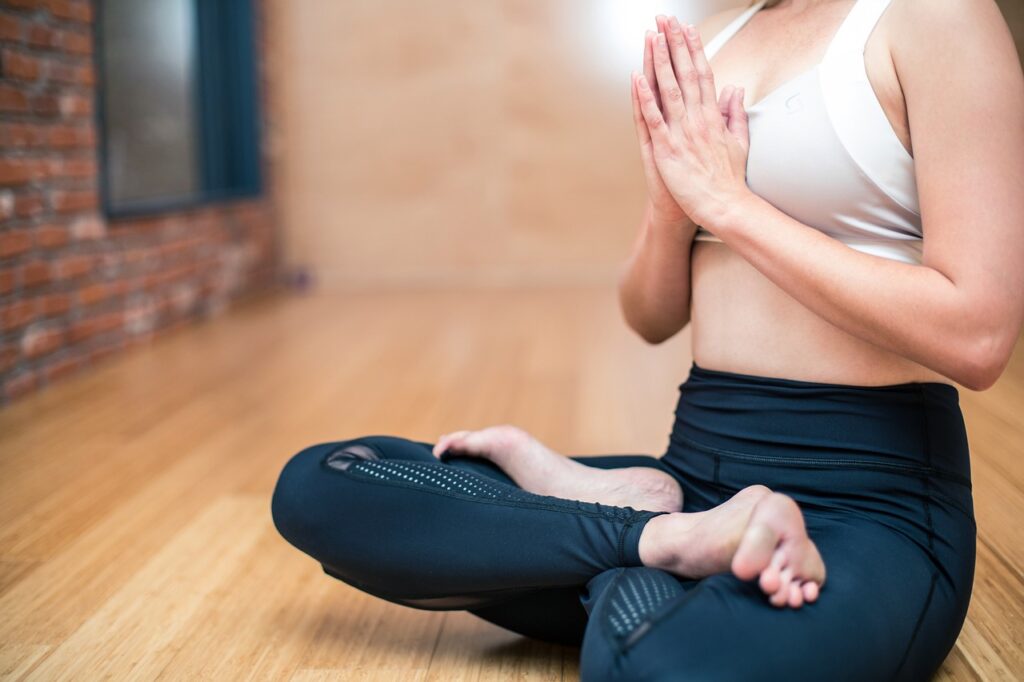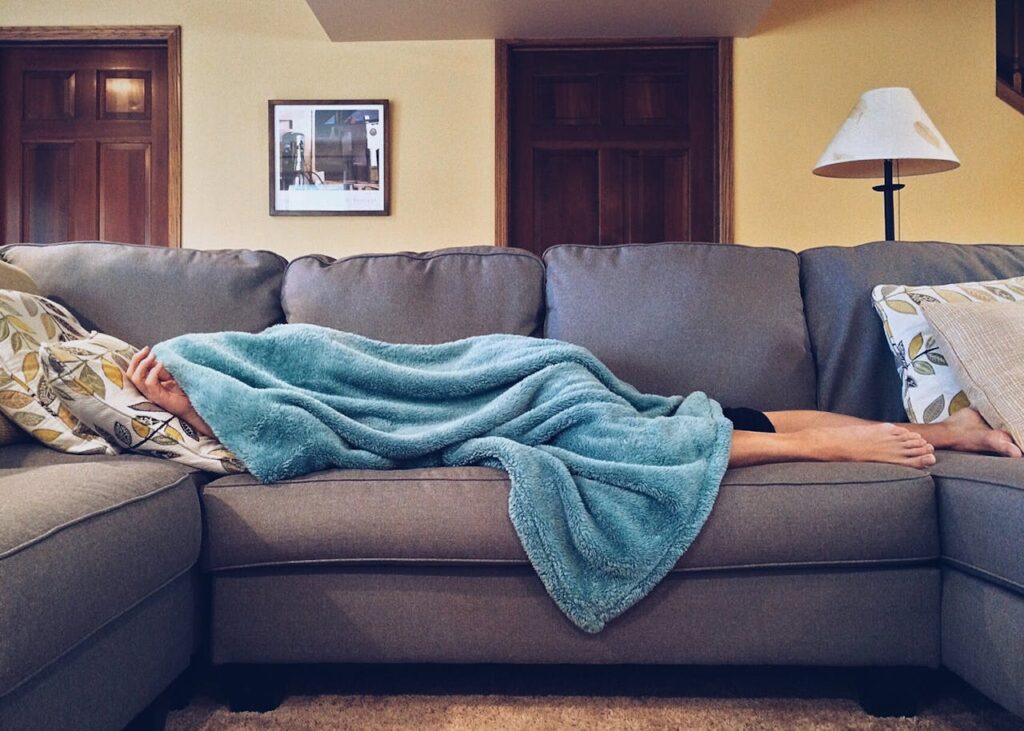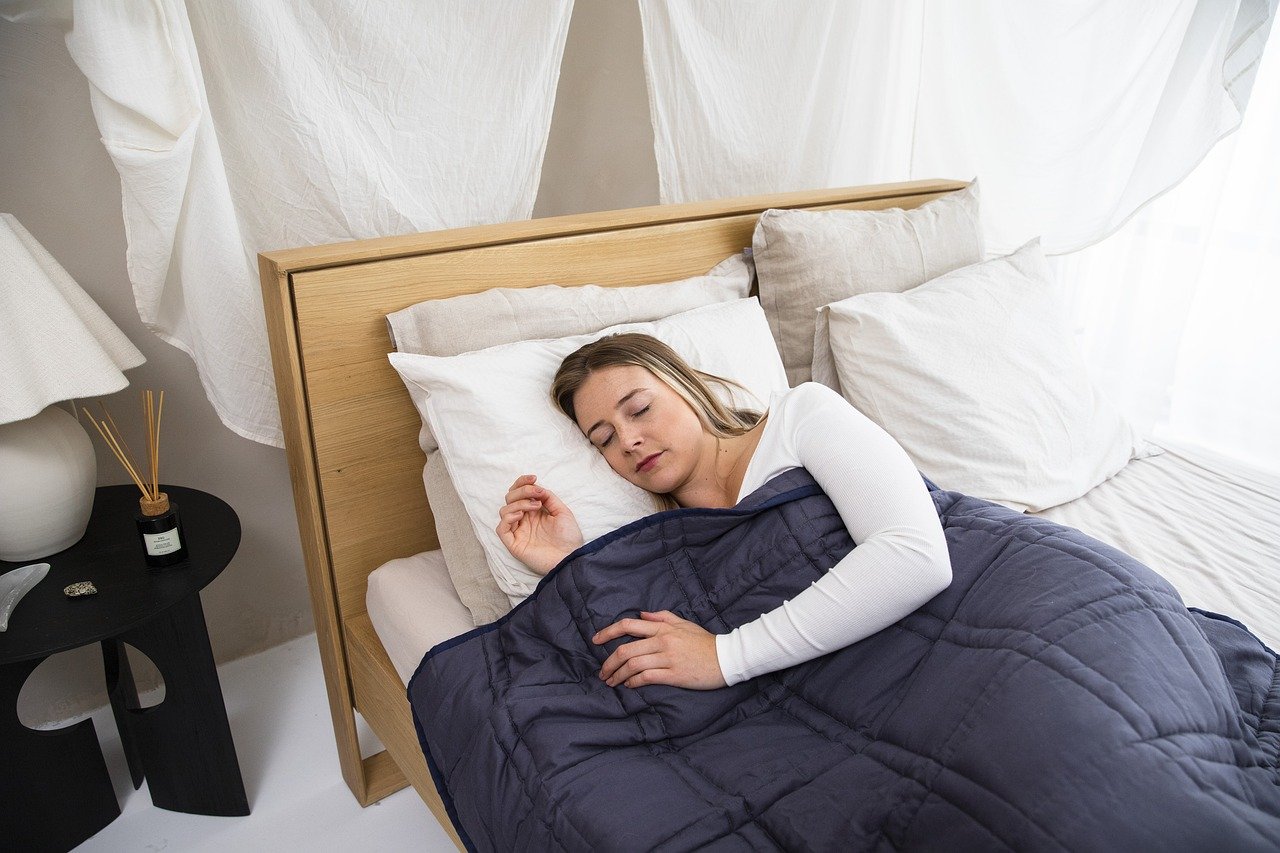Are you tossing and turning all night, desperately seeking a good night’s sleep? In fact, a staggering 50-70 million US adults suffer from sleep disorders. But fear not, because I’ve got some game-changing sleep hygiene tips that’ll have you snoozing like a baby in no time! Ready to transform your nights and supercharge your days? Let’s jump into the world of sleep hygiene and unlock the secrets to blissful slumber!
What is Sleep Hygiene?
Sleep hygiene might sound like a fancy term, but it’s really just about the habits and practices that lead to a good night’s sleep. Think of it as a set of rules for your bedtime routine – the dos and don’ts that can make or break your sleep quality.
At its core, sleep hygiene encompasses all the behaviours and environmental factors that influence your sleep. This includes everything from your bedtime routine to the foods you eat and even the layout of your bedroom. Good sleep hygiene practices are designed to promote consistent, uninterrupted sleep by addressing both physical and psychological factors that might be keeping you from getting that precious sleep.
But why is sleep hygiene so important? In our fast-paced, always-on world, sleep often takes a back seat to other priorities. We stay up late binge-watching our favourite shows, scroll through social media until the wee hours, or burn the midnight oil to meet work deadlines. However, consistently poor sleep can have serious consequences on our health, mood, and overall quality of life.
The benefits of proper sleep hygiene are numerous and far-reaching. When you practice good sleep hygiene:
- Likely to fall asleep faster and stay asleep longer.
- Sleep quality improves, meaning you wake up feeling more refreshed and energized.
- Mood stabilizes, reducing the risk of irritability and mood swings.
- Cognitive function improves, enhancing memory, focus, and problem-solving skills.
- Physical health gets a boost, as good sleep supports immune function, metabolism, and cardiovascular health.
In essence, sleep hygiene is the foundation for overall well-being. It’s not just about getting enough sleep – it’s about getting the right kind of sleep, consistently. By implementing good sleep hygiene practices, you’re setting yourself up for success in all areas of life.
Create a Relaxing Bedtime Routine
Establishing a consistent and relaxing bedtime routine is one of the cornerstones of good sleep hygiene. This routine serves as a signal to your body and mind that it’s time to wind down and prepare for sleep. Let’s discuss some key elements of an effective bedtime routine:
Establish a Consistent Sleep Schedule
Our bodies thrive on routine, and this is especially true when it comes to sleep. Try to go to bed and wake up at the same time every day – yes, even on weekends! This consistency helps regulate your body’s internal clock, known as the circadian rhythm.
Start by determining how much sleep you need (most adults require 7-9 hours) and work backwards from your desired wake-up time to establish your ideal bedtime. Stick to this schedule as closely as possible, allowing for no more than an hour’s variation.
Incorporate Relaxation Techniques
As bedtime approaches, it’s crucial to engage in activities that help you relax and unwind. This could include:
- Meditation: Even just 10 minutes of mindfulness meditation can significantly reduce stress and prepare your mind for sleep.
- Deep breathing exercises: Try the 4-7-8 technique: inhale for 4 seconds, hold for 7 seconds, and exhale for 8 seconds. Repeat this cycle 4 times.
- Progressive muscle relaxation: Starting from your toes and working up to your head, tense each muscle group for 5 seconds, then relax for 30 seconds.
- Reading a book: Choose something enjoyable but not too stimulating.
- Listening to calming music or nature sounds: Slow, gentle tunes or sounds like rain or ocean waves can be very soothing.
Limit Screen Time Before Bed
The blue light emitted by phones, tablets, and computers can interfere with your body’s production of melatonin, the hormone that regulates sleep. Try to avoid screens for at least an hour before bed. If you must use a device, consider using blue light filtering apps or glasses.
Instead of scrolling through social media or watching TV, engage in calm, screen-free activities. This could be journaling, doing a jigsaw puzzle, or having a quiet conversation with a loved one.
The goal of your bedtime routine is to create a transition period between your busy day and restful night. It might take some experimentation to find what works best for you, but once you establish a routine that feels right, stick with it. Your body will begin to associate these activities with sleep, making it easier to drift off when the time comes.
Read more: Unlock The Secrets of a Successful Bedtime Routine
Optimize Your Sleep Environment

Creating the ideal sleep environment is crucial for getting a good night’s rest. Your bedroom should be a sanctuary dedicated to sleep and relaxation. Let’s explore how to optimize your sleep space:
Keep Your Bedroom Cool, Dark, and Quiet
Temperature plays a significant role in sleep quality. Most experts recommend keeping your bedroom between 60-67°F (15-19°C) for optimal sleep. Our body temperature naturally drops as we prepare for sleep, and a cool room can facilitate this process.
Darkness is equally important. Even small amounts of light can interfere with your body’s production of melatonin, the sleep hormone. Use blackout curtains or an eye mask to block out any external light sources.
Noise can be a major sleep disruptor. If you live in a noisy area, consider using a white noise machine or earplugs to create a quiet environment. Some people find that soft, ambient sounds like rainfall or gentle music can also help mask disruptive noises.
Invest in a Comfortable Mattress and Pillows
Your bed is perhaps the most important piece of sleep equipment you own. A mattress that’s too soft, too firm, or simply old and worn out can lead to discomfort and poor sleep quality. Generally, mattresses should be replaced every 7-10 years, but this can vary depending on the quality and type of mattress.
When choosing a mattress, consider your sleeping position, body weight, and any specific needs (like back pain). Memory foam, innerspring, and hybrid mattresses all have their pros and cons, so it’s worth doing some research and testing different options.
Pillows are equally important. They should support your head and neck in a neutral position, aligning with your spine. Side sleepers generally need thicker pillows, while back and stomach sleepers might prefer thinner ones. Like mattresses, pillows should be replaced regularly – about every 1-2 years.
Use Blackout Curtains or an Eye Mask if Needed
If you’re sensitive to light or if your bedroom has unavoidable light sources (like street lamps), blackout curtains can be a game-changer. These heavy-duty curtains block out almost all external light, creating a cave-like darkness that’s ideal for sleep.
For a more portable option, consider using an eye mask. This can be particularly useful when travelling or if you share a room with someone who has a different sleep schedule. Look for a mask that’s comfortable, doesn’t put pressure on your eyes, and blocks out light effectively.
Choose Calming Colors and Decor
The visual environment of your bedroom can have a subtle but important impact on your ability to relax and fall asleep. Consider these tips:
- Colours: Opt for calm, soothing colours like soft blues, greens, or neutral tones. These colours are associated with relaxation and can help create a tranquil atmosphere.
- Avoid bright or stimulating colours like red or orange in large quantities, as these can be energizing rather than calming.
- Decor: Choose simple, minimalist decor that doesn’t create visual clutter. Too many decorations or busy patterns can be stimulating to the mind.
- Consider nature-inspired elements, like landscape paintings or plants, which can have a calming effect.
Read more: The Best Relaxing Bedroom Colours for Peaceful Retreat
Remove Clutter and Distractions
A cluttered room can lead to a cluttered mind, making it harder to relax and fall asleep. Here’s how to minimize distractions:
- Keep your bedroom tidy and organized. Use storage solutions to keep items out of sight.
- Remove work-related items from your bedroom. This helps reinforce the association between your bedroom and sleep, rather than stress or work.
- Consider removing or covering electronic devices. The presence of TVs, computers, or even your smartphone can be psychologically stimulating.
- If you must have a clock in your room, opt for one without bright lights and position it so you can’t see it from your bed. Clock-watching can increase sleep anxiety.
Use Aromatherapy or White Noise Machines
Engaging other senses can help create a sleep-promoting environment:
- Aromatherapy: Certain scents can promote relaxation and sleep. Lavender is particularly well-known for its sleep-inducing properties. Use essential oils in a diffuser, or lightly scent your pillowcase.
- White noise machines: These devices create a consistent background noise that can mask disruptive sounds and help you fall asleep. Some people prefer natural sounds like rainfall or ocean waves.
- If you don’t want to invest in a white noise machine, there are many smartphone apps that serve the same purpose.
Remember, your bedroom should be associated with sleep and relaxation. Try to remove work-related items, exercise equipment, or anything else that might remind you of daytime activities. The more you can create a space dedicated solely to rest, the easier it will be for your mind to switch into sleep mode when you enter the room.
Read more: The Ultimate Guide to Sleep Environment Optimization
Watch What You Eat and Drink

What you consume throughout the day, especially in the hours leading up to bedtime, can significantly impact your sleep quality. Let’s delve into some key considerations:
Avoid Caffeine and Heavy Meals Close to Bedtime
Caffeine is a stimulant that can stay in your system for hours after consumption. While individual sensitivity varies, it’s generally recommended to avoid caffeine for at least 6 hours before bedtime. This doesn’t just mean coffee – remember that tea, chocolate, and some sodas also contain caffeine.
As for meals, eating a large, heavy dinner close to bedtime can lead to discomfort and indigestion, making it harder to fall asleep. Try to have your last big meal at least 3 hours before you plan to sleep. If you find yourself hungry closer to bedtime, opt for a light snack that combines complex carbohydrates and protein, like whole grain crackers with cheese or a small bowl of cereal with milk.
Limit Alcohol Consumption
While alcohol might make you feel sleepy at first, it can actually disrupt your sleep cycle later in the night. Alcohol can cause you to wake up more frequently, reduce the amount of restorative REM sleep you get, and lead to more vivid or disturbing dreams.
If you do choose to drink, try to finish your last alcoholic beverage at least 3-4 hours before bedtime. This gives your body time to metabolize the alcohol before you try to sleep.
Stay Hydrated Throughout the Day
Proper hydration is crucial for overall health and can impact sleep quality. However, drinking too much right before bed can lead to middle-of-the-night bathroom trips that disrupt your sleep.
The key is to stay well-hydrated throughout the day, then taper off in the evening. Try to drink most of your daily water intake earlier in the day, and limit fluids in the 1-2 hours before bed.
Consider Sleep-Promoting Foods
Some foods contain nutrients that may promote better sleep. For example:
- Tryptophan-rich foods like turkey, eggs, and cheese can help boost production of sleep-inducing melatonin.
- Magnesium-rich foods like nuts and seeds may help relax muscles and reduce stress.
- Complex carbohydrates like whole grains can help make tryptophan more available to the brain.
A small bedtime snack combining these elements – like a banana with almond butter or a small bowl of whole-grain cereal – might help promote sleepiness.
Everyone’s body reacts differently to foods and drinks. Pay attention to how what you consume affects your sleep, and adjust your habits accordingly. Keeping a food and sleep diary for a few weeks can help you identify patterns and make informed decisions about your diet and sleep hygiene.
Read more: Sleep Better Tonight: Top Foods for a Sleep Friendly Diet
Exercise for Better Sleep

Regular physical activity is not only crucial for overall health but can also significantly improve your sleep quality. Let’s explore how exercise can enhance your sleep and the best ways to incorporate it into your routine:
Benefits of Regular Physical Activity for Sleep Quality
Exercise can improve sleep in several ways:
- It helps regulate your circadian rhythm, making it easier to fall asleep at night and wake up in the morning.
- Physical activity reduces stress and anxiety, common culprits behind sleep issues.
- Exercise can increase the amount of deep, restorative sleep you get each night.
- Regular activity can help alleviate symptoms of sleep disorders like insomnia and sleep apnea.
Studies have shown that people who exercise regularly not only fall asleep faster but also enjoy better quality sleep throughout the night.
Best Times to Exercise for Optimal Sleep
The timing of your workouts can impact your sleep. While any exercise is generally better than no exercise, here are some considerations:
- Morning exercise: An early workout can help reset your sleep/wake cycle by raising your body temperature early in the day. This can be particularly beneficial if you’re trying to establish a consistent sleep schedule.
- Afternoon exercise: Some studies suggest that afternoon workouts (between 2-6 PM) might be optimal for sleep. The post-exercise drop in body temperature, which happens a few hours after you finish working out, can help promote sleepiness.
- Evening exercise: Contrary to popular belief, moderate evening exercise doesn’t necessarily disrupt sleep for everyone. However, intense workouts close to bedtime might make it harder to fall asleep due to increased heart rate, body temperature, and adrenaline levels.
The key is to find what works best for you. If you find that evening workouts energize you too much, try shifting your exercise to earlier in the day.
Types of Exercises that Promote Better Sleep
While any form of regular exercise can improve sleep, some types may be particularly beneficial:
- Aerobic exercises: Activities like brisk walking, jogging, cycling, or swimming can significantly improve sleep quality. Aim for at least 150 minutes of moderate-intensity aerobic activity per week.
- Strength training: Resistance exercises not only build muscle but can also enhance sleep quality. Try to include strength training sessions 2-3 times a week.
- Yoga: The combination of physical postures, breathing techniques, and meditation in yoga can be especially effective for improving sleep. Gentle, restorative yoga practices before bed might help you relax and prepare for sleep.
- Tai Chi: This ancient Chinese practice combines slow, gentle movements with deep breathing and meditation. It’s been shown to improve sleep quality, especially in older adults.
- High-Intensity Interval Training (HIIT): While intense, these short bursts of activity followed by rest periods can be very effective for improving sleep quality. However, it’s best to do HIIT earlier in the day due to its intensity.
It’s important to stay consistent. Engaging in regular exercise will benefit your sleep more than occasional, high-intensity sessions. If you’re just starting out, take it easy and slowly build up the length and intensity of your workouts.
Lastly, listen to your body. If you find that certain types of exercise or workout times aren’t conducive to good sleep, don’t be afraid to adjust your routine. The goal is to find an exercise regimen that not only improves your overall health but also enhances your sleep quality.
Read more: The Surprising Connection Between Exercise And Sleep Quality
Manage Stress and Anxiety

Stress and anxiety are common culprits behind sleep problems. When your mind is racing with worries or your body is tense from stress, it can be challenging to relax and fall asleep. Here are some strategies to help manage stress and anxiety for better sleep:
Practice Mindfulness and Relaxation Techniques
Mindfulness and relaxation techniques can be powerful tools for calming your mind and body before bed. Here are a few to try:
- Mindfulness Meditation: This involves focusing on the present moment, often by paying attention to your breath. Start with just 5-10 minutes before bed. Apps like Headspace or Calm can guide you through the process.
- Progressive Muscle Relaxation: Systematically tense and then relax different muscle groups in your body. This can help release physical tension you may not even realize you’re holding.
- Guided Imagery: Use your imagination to create a peaceful, calming scene. This can help distract your mind from stressful thoughts and create a sense of relaxation.
- Deep Breathing Exercises: Try the 4-7-8 technique mentioned earlier, or simply focus on taking slow, deep breaths. This can help activate your body’s relaxation response.
- Yoga Nidra: This is a form of guided meditation that can induce a state of deep relaxation. There are many free recordings available online.
Keep a Worry Journal to Offload Thoughts Before Bed
If racing thoughts keep you up at night, try keeping a worry journal. Set aside some time before bed to write down your concerns, to-do lists, or anything else on your mind. This act of “offloading” can help clear your mind for sleep. You might also include a few things you’re grateful for, as focusing on positive aspects of your life can help counteract anxiety.
Practice Good Sleep Hygiene
Many of the sleep hygiene practices we’ve discussed in other sections can also help manage stress and anxiety:
- Stick to a consistent sleep schedule
- Create a relaxing bedtime routine
- Limit exposure to screens before bed
- Ensure your sleep environment is comfortable and conducive to rest
Consider Cognitive Behavioral Therapy for Insomnia (CBT-I)
If stress and anxiety are significantly impacting your sleep, you might benefit from Cognitive Behavioral Therapy for Insomnia (CBT-I). This is a structured program that helps you identify and replace thoughts and behaviours that cause or worsen sleep problems with habits that promote sound sleep. CBT-I is typically conducted by a sleep specialist or therapist trained in this technique.
Try Natural Stress-Reduction Supplements
Some people find relief from stress and improved sleep with natural supplements. However, always consult with a healthcare provider before starting any new supplement regimen. Some options to discuss might include:
- Magnesium: This mineral plays a role in regulating the nervous system and may help promote relaxation.
- L-theanine: An amino acid found in tea leaves that may help reduce stress and promote relaxation.
- Lavender: Whether in essential oil form or as a supplement, lavender is known for its calming properties.
- Valerian root: This herb has been used for centuries to promote relaxation and sleep.
Seek Professional Help if Needed
If stress and anxiety are persistently interfering with your sleep and daily life, don’t hesitate to seek professional help. A mental health professional can provide more targeted strategies for managing stress and anxiety, which in turn can significantly improve your sleep quality.
Remember, managing stress and anxiety is an ongoing process. Be patient with yourself and celebrate small improvements. Over time, as you learn to better manage stress and anxiety, you’re likely to see significant improvements in both your sleep quality and overall well-being.
Read more: 10 Proven Techniques to Stress Reduction for Sleep
Limit Daytime Naps

While a quick nap can be refreshing, excessive or poorly timed napping can interfere with your nighttime sleep. Let’s explore how to approach napping in a way that supports, rather than hinders, your overall sleep hygiene:
Ideal Nap Duration and Timing
The ideal nap is short and well-timed. Here’s what the research suggests:
- Duration: Aim for a “power nap” of about 10-20 minutes. This length of nap can improve alertness and performance without leaving you feeling groggy or interfering with nighttime sleep.
- Longer naps (30-60 minutes) allow you to enter deeper stages of sleep. While these can be beneficial occasionally, they’re more likely to result in sleep inertia – that groggy, disoriented feeling upon waking.
- Timing: The best time for a nap is generally between 2:00 PM and 3:00 PM. This timing aligns with a natural dip in the circadian rhythm for most people.
- Avoid napping after 3:00 PM, as later naps are more likely to interfere with your ability to fall asleep at night.
How Naps Affect Nighttime Sleep
Napping can have both positive and negative effects on nighttime sleep:
Positive effects:
- Short naps can reduce sleepiness and improve cognitive function, mood, and alertness.
- For people who don’t get enough sleep at night (like shift workers), naps can help reduce sleep debt.
Negative effects:
- Long or late afternoon naps can interfere with nighttime sleep, making it harder to fall asleep or stay asleep through the night.
- Regular, long naps might be a sign of poor nighttime sleep quality and could perpetuate a cycle of poor sleep.
Alternatives to Napping for Boosting Energy
If you find that naps interfere with your nighttime sleep, or if napping isn’t practical for you, consider these alternatives for a midday energy boost:
- Light exercise: A brisk 10-minute walk can increase alertness and energy levels.
- Exposure to natural light: Spending time outdoors or near a window can help regulate your circadian rhythm and boost energy.
- Hydration: Sometimes fatigue is a sign of mild dehydration. Try drinking a glass of water.
- Healthy snack: Choose something with a mix of complex carbohydrates and protein for sustained energy.
- Deep breathing exercises: A few minutes of focused, deep breathing can help increase oxygen flow and alertness.
- Meditation: A short mindfulness practice can help reset your mind and increase focus.
- Cold splash: Splashing cold water on your face can provide a quick wake-up.
- Energizing scents: Aromatherapy with scents like peppermint, citrus, or rosemary can be invigorating.
While naps can be beneficial, they’re not a substitute for good nighttime sleep. If you find yourself relying heavily on naps, it might be a sign that you need to reassess your overall sleep habits. Focus on improving your nighttime sleep quality and duration, and you may find that your need for daytime naps naturally decreases.
Read more: Power Nap Technique: How to Recharge in Just 20 Minutes
Establish a Consistent Wake-Up Routine
While much of sleep hygiene focuses on preparing for bedtime, establishing a consistent wake-up routine is equally important for maintaining good sleep habits. A well-structured morning routine can set the tone for your entire day and help regulate your sleep-wake cycle. Let’s explore the components of an effective wake-up routine:
Benefits of Waking Up at the Same Time Daily
Consistency is key when it comes to sleep hygiene, and this includes your wake-up time. Here’s why it’s beneficial to wake up at the same time every day, even on weekends:
- Regulates your body’s internal clock: Your circadian rhythm, or internal body clock, thrives on consistency. By waking up at the same time daily, you’re reinforcing this natural rhythm.
- Improves sleep quality: A consistent wake time can lead to more consistent sleep patterns, potentially improving the quality of your sleep.
- Enhances daytime alertness: When your body knows when to expect wakefulness, it can better prepare, leading to improved alertness throughout the day.
- Reduces “social jet lag”: This term refers to the mismatch between your body’s internal clock and your social obligations. Keeping a consistent schedule can minimize this effect.
- May improve overall health: Consistent sleep-wake patterns have been associated with better cardiovascular health, metabolism, and mental well-being.
Morning Rituals to Energize Your Day
Once you’ve established a consistent wake-up time, consider incorporating these energizing morning rituals:
- Avoid the snooze button: Repeatedly hitting snooze can lead to fragmented, low-quality sleep in those extra minutes. It’s better to set your alarm for when you actually need to get up and then do so immediately.
- Hydrate: Drink a glass of water soon after waking. You naturally become dehydrated overnight, and rehydrating can help kickstart your metabolism and increase alertness.
- Stretch or light exercise: Gentle stretching or a short yoga routine can help wake up your body and mind. Even a few minutes can make a difference.
- Expose yourself to natural light: Light exposure helps suppress melatonin production and increases cortisol, signalling to your body that it’s time to be awake and alert.
- Eat a nutritious breakfast: A balanced breakfast can provide energy for the day ahead and help stabilize your blood sugar levels.
- Practice mindfulness or gratitude: Starting your day with a short meditation or by noting things you’re grateful for can set a positive tone for the day.
- Plan your day: Spend a few minutes reviewing your schedule and setting priorities for the day. This can help reduce stress and increase productivity.
How to Use Natural Light to Regulate Your Sleep-Wake Cycle
Light exposure plays a crucial role in regulating your circadian rhythm. Here’s how to leverage natural light to your advantage:
- Seek morning light: Try to get exposure to natural daylight within the first hour of waking. This could mean having breakfast near a sunny window, taking a short walk, or even using a light therapy box if natural light is limited.
- Maintain daytime brightness: Keep your environment bright during the day. Open curtains and blinds, and try to get outside during daylight hours when possible.
- Reduce evening light exposure: As bedtime approaches, start dimming lights and avoiding bright screens. This helps signal to your body that it’s time to start producing melatonin, the sleep hormone.
- Use warm, dim lighting in the evening: If you need light in the evening, opt for warm-toned, dim lights. Some smart bulbs allow you to adjust colour temperature throughout the day.
- Consider dawn simulation: Dawn simulation devices gradually increase light in your bedroom in the morning, mimicking a natural sunrise. This can be particularly helpful during darker winter months.
Establishing a new routine takes time. Be patient with yourself and try to stick with your new wake-up routine for at least a few weeks to allow your body to adjust. Over time, you may find that you naturally start waking up around your chosen time, even without an alarm.
By combining a consistent wake-up time with energizing morning rituals and strategic light exposure, you can help regulate your sleep-wake cycle and set yourself up for better sleep and more productive days.
When to Seek Professional Help
While implementing good sleep hygiene practices can resolve many sleep issues, there are times when professional help may be necessary. It’s important to recognize when your sleep problems might be indicative of a more serious condition or when they’re significantly impacting your quality of life. Let’s explore when and how to seek professional help for sleep issues:
Signs that Sleep Issues May Require Medical Attention
Consider seeking professional help if you experience any of the following:
- Persistent insomnia: If you have difficulty falling asleep, staying asleep, or waking up too early for a month or more, despite practising good sleep hygiene.
- Excessive daytime sleepiness: Feeling excessively tired during the day, even after what you believe to be a full night’s sleep.
- Loud snoring accompanied by gasping or choking sounds: This could be a sign of sleep apnea, a serious sleep disorder.
- Restless legs or periodic limb movements: If you experience an irresistible urge to move your legs, especially at night, or your partner notices frequent leg movements during sleep.
- Sleep paralysis or hallucinations: Experiencing inability to move or speak when falling asleep or waking up, or having vivid, dream-like experiences while awake.
- Narcolepsy symptoms: Sudden sleep attacks during the day or sudden loss of muscle tone triggered by strong emotions.
- Sleepwalking or other unusual behaviors during sleep: Especially if these behaviors pose a risk to your safety or the safety of others.
- Chronic pain or other medical conditions interfering with sleep: Sometimes, addressing underlying health issues can resolve sleep problems.
- Depression or anxiety significantly impacting sleep: Mental health conditions often coexist with sleep disorders and may require professional treatment.
- Sleep issues affecting daily functioning: If sleep problems are impacting your work performance, relationships, or overall quality of life.
Types of Sleep Disorders
There are numerous sleep disorders that might require professional diagnosis and treatment. Some common ones include:
- Insomnia: Difficulty falling asleep or staying asleep.
- Sleep Apnea: Breathing repeatedly stops and starts during sleep.
- Restless Legs Syndrome (RLS): An irresistible urge to move the legs, often accompanied by uncomfortable sensations.
- Narcolepsy: Excessive daytime sleepiness and sudden sleep attacks.
- Parasomnias: Abnormal movements, behaviours, emotions, perceptions, and dreams that occur while falling asleep, sleeping, between sleep stages, or during arousal from sleep. This includes sleepwalking, night terrors, and REM sleep behaviour disorder.
- Circadian Rhythm Sleep Disorders: Problems with the timing of sleep within the 24-hour day.
- Hypersomnia: Excessive sleepiness during the day, even after apparently adequate or prolonged nighttime sleep.
Available Treatments and Therapies
Sleep specialists have a variety of tools at their disposal to diagnose and treat sleep disorders:
- Sleep studies: These can include overnight polysomnography in a sleep lab or home sleep tests.
- Cognitive Behavioral Therapy for Insomnia (CBT-I): A structured program that helps you identify and replace thoughts and behaviours that cause or worsen sleep problems.
- Light therapy: Used to treat circadian rhythm disorders and seasonal affective disorder.
- Continuous Positive Airway Pressure (CPAP): A common treatment for sleep apnea.
- Medications: Including prescription sleep aids, melatonin supplements, and treatments for underlying conditions.
- Lifestyle modifications: A sleep specialist can provide personalized advice on sleep hygiene, diet, exercise, and stress management.
- Alternative therapies: Some people find relief with acupuncture, massage therapy, or herbal supplements, though it’s important to discuss these with a healthcare provider.
How to Find a Sleep Specialist
If you’re concerned about your sleep, start by discussing your symptoms with your primary care physician. They may refer you to a sleep specialist if necessary. You can also:
- Check with your insurance provider for in-network sleep specialists.
- Look for board-certified sleep medicine physicians through the American Academy of Sleep Medicine.
- Consider seeking out a behavioural sleep medicine specialist if you’re interested in non-medication approaches like CBT-I.
Seeking help for sleep issues is not a sign of weakness. Sleep is fundamental to our health and well-being, and addressing sleep problems can have far-reaching positive effects on your overall quality of life. Don’t hesitate to reach out to a professional if you’re struggling with persistent sleep issues.
Conclusion
We’ve covered a lot of ground in our sleep hygiene tips! From creating the perfect sleep sanctuary to mastering the art of the power nap, you’re now armed with the tools to revolutionize your rest. Remember, good sleep is not a luxury – it’s a necessity for a healthy, happy life. So, why not start implementing these tips tonight and see how they transform your sleep quality? What’s the first sleep hygiene habit you’re excited to try?



